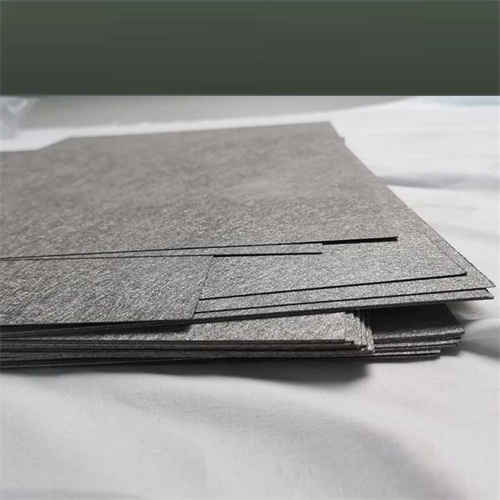Titanium Fiber Felt for PEM is a material made from titanium (Ti) or titanium alloy fibres. The titanium fibres themselves are made from very fine titanium or titanium alloy wires that are spun or braided by a special process. These fibres are typically micron-sized, with diameters typically ranging from 5-50 microns, and have extremely high specific surface area and porosity.Titanium Fiber Felt for PEM is fabricated with titanium fibres that are sintered, braided, and laid to form a three-dimensional mesh structure that provides excellent porosity and mechanical properties.
The main material of Titanium Fiber Felt for PEM:
Pure Titanium (Ti)
Pure titanium (e.g. Grade 1, Grade 2 titanium) is commonly used as the base material for Titanium Fiber Felt for PEM, which has good corrosion resistance, high temperature resistance and good mechanical properties. Pure titanium is a common material used in the manufacture of Titanium Fiber Felt for PEM, especially for applications requiring high chemical stability and corrosion resistance.
Titanium Alloys (e.g. Ti-6Al-4V)
Some special applications may use titanium alloys (e.g. Ti-6Al-4V alloy) in order to improve the strength and temperature resistance of Titanium Fiber Felt for PEM. The composition of titanium alloys typically includes titanium with elements such as aluminium and vanadium to provide improved strength and toughness.
Process of making Titanium Fiber Felt for PEM:
Fibre Production:
Titanium fibres are typically produced through a chemical spinning or mechanical stretching process, where the raw titanium is converted to micron-sized titanium fibres after high temperature treatment. Titanium fibres are typically a few microns in diameter and have a high specific surface area.
Sintering process:
The structure of Titanium Fiber Felt for PEM is strengthened through the sintering process. Sintering involves heating the titanium fibres below their melting point at elevated temperatures, which causes contact points between the fibres to bond, thereby increasing the strength and stability of the material.
Braiding or lay-up:
Titanium fibres can be mechanically braided or laid in a process to form a felt-like structure. Due to their high strength and flexibility, titanium fibres are able to form homogeneous structures with high porosity.

Features of Titanium Fiber Felt for PEM:
High porosity: Titanium Fiber Felt for PEM typically has a porosity of 60-80%, which provides excellent gas and liquid transport capabilities, especially in scenarios such as hydrogen generation where efficient gas-liquid mass transfer is required.
High Temperature and Corrosion Resistance: Titanium fibres have excellent resistance to high temperatures (up to 900°C or more) and corrosion, and are especially stable in corrosive liquids such as acids and alkalis.
High Specific Surface Area: The micron-sized structure of titanium fibres provides a large surface area, which helps to increase electrochemical reaction activity and is widely used in applications such as catalyst support and gas diffusion layers.
Summary:
Titanium Fiber Felt for PEM is made of titanium (Ti) or titanium alloys (e.g., Ti-6Al-4V), and these titanium material choices make the Titanium Fiber Felt for PEM lightweight, high-strength, corrosion-resistant, and high-temperature-resistant, which is suitable for hydrogen production, fuel cells, electrochemical catalysis, and other fields.